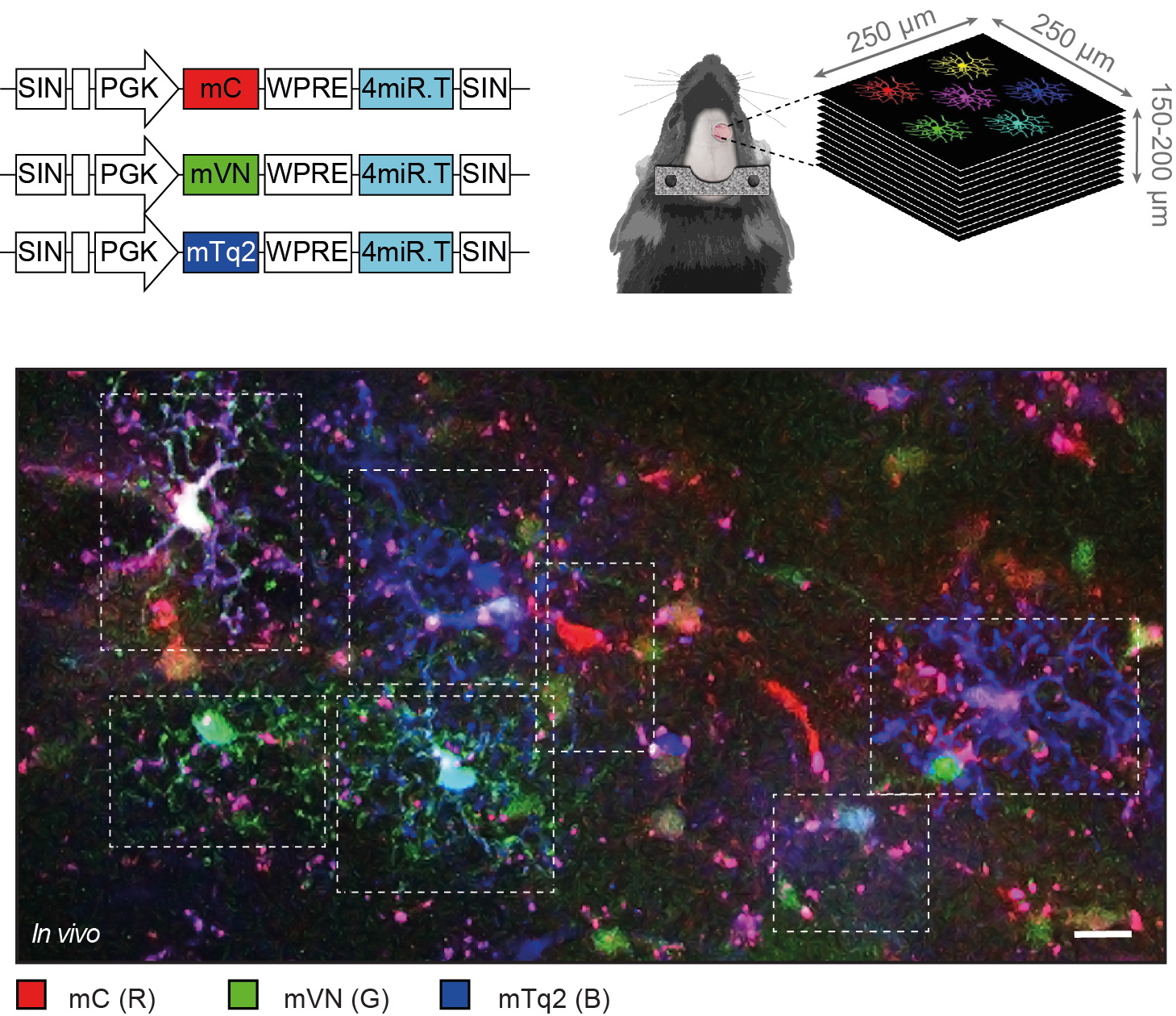Plaque vicinity as a hotspot of microglial turnover in a mouse model of Alzheimer's disease

Microglia, the major immune cells of the brain, are functionally heterogeneous but in vivo functional properties of these cells are rarely studied at single-cell resolution. By using microRNA-9 regulated viral vectors for multicolor labeling and longitudinal in vivo monitoring of individual microglia, we followed their fate in the cortex of healthy adult mice and at the onset of amyloidosis in a mouse model of Alzheimer's disease. In wild-type mice, microglia were rather mobile (16% of the cells migrated at least once in 10–20 days) but had a low turnover as documented by low division and death rates.
Half of the migratory events were tightly associated with blood vessels. Surprisingly, basic migration properties of microglia (i.e., fraction of migrating cells, saltatory migration pattern, speed of migration, translocation distance, and strong association with blood vessels) were preserved in amyloid-depositing brains, despite amyloid plaques becoming the major destination of migration. Besides, amyloid deposition significantly increased microglial division and death rates. Moreover, the plaque vicinity became a hotspot of microglial turnover, harboring 33% of all migration, 70% of death and 54% of division events.
The article is accessible on the following DOI: https://doi.org/10.1002/glia.24458
